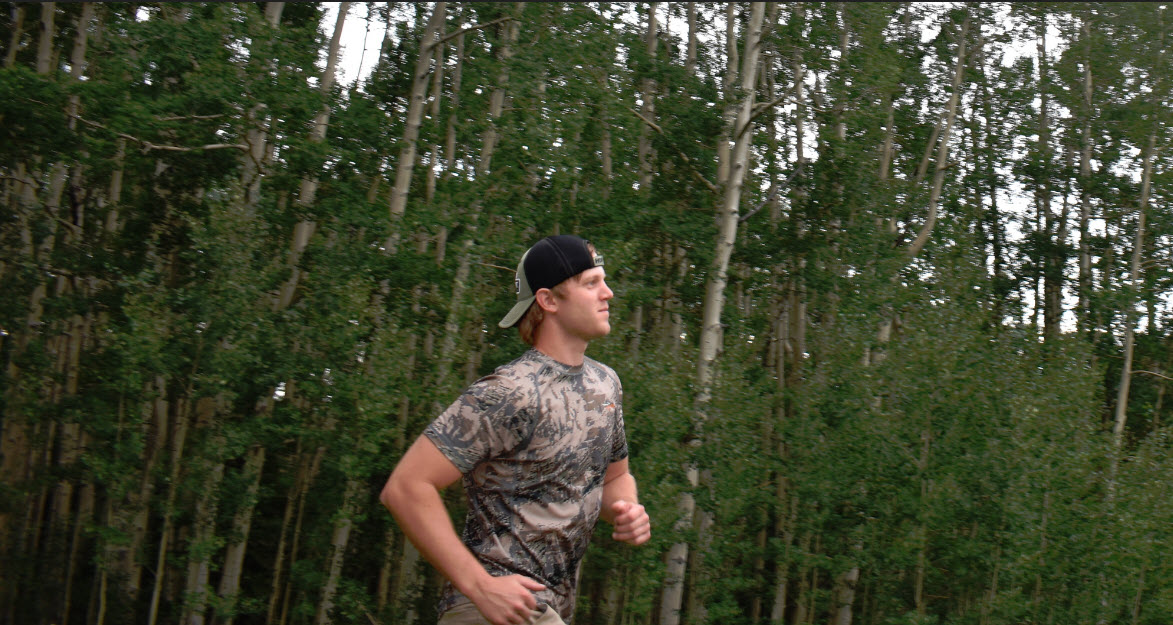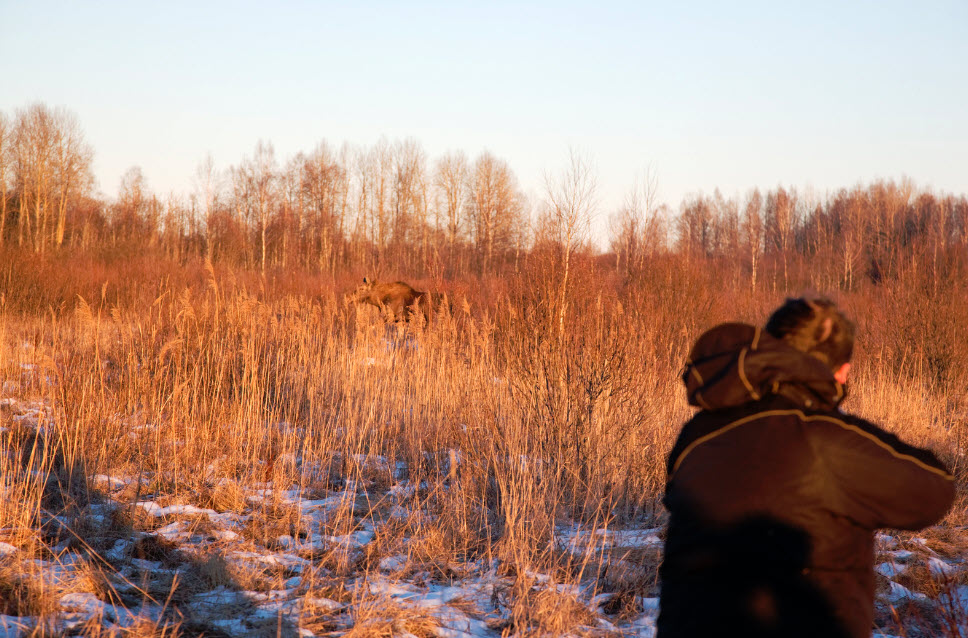
You’re not at the top of your hunter game if you haven’t tried elk hunting. You don’t just go after an elk; you need to be in your best shape to be able to climb after this majestic game. In elk country, you don’t “hike” but rather “climb” after your game, so being in your top physical (and mental) shape is crucial.
It’s not only the climbing that makes elk hunting so demanding and challenging. Any elk hunter can tell you that there is no magic trick to put an elk in the freezer. Let’s take the example of Colorado, home of more than 250,000 elks, making for almost 40% of the entire continental elk population. Here, only 30% of elk hunters manage to harvest an animal in a year. As you can see, 70% of elk hunters still don’t make the final shot, and it’s not because they are all beginners. Elk is truly an illusive game, requiring trained skills.
Page Contents
What tips to follow when you start elk hunting?
As a hunter, you learn early that you need to follow as many tips as you can. Therefore, our guide on how to start elk hunting is undoubtedly helpful for most.
1. Get in shape
One thing you should never skip when planning to elk hunt is getting in good shape. You can do it in many ways; some follow 12-weeks plans to get in the best shape, others choose to jog every morning during the months before fall– to each their own. You can try to wake up early and jog for thirty minutes (three to four miles). By September/October, you should be ready to take the mountains at a good pace.
When you’re elk hunting out-of-state and come from a lower elevation, you will face different challenges. Jogging every day won’t be enough to handle the elk hunting. AMS (Acute Mountain Sickness) is real, and more than 40% of tourists to Colorado experience it. The effects of AMS show even at elevations as low as 6,500ft.
Fatigues, headaches, lack of appetite, poor sleep are some of the most common symptoms of AMS. They should disappear after a couple of days, so plan your trip so that you adjust before actually going after your elk. Hydration is crucial for many reasons, and it can also alleviate the symptoms of AMS. If you don’t have any idea what staying hydrated means, keep in mind that you need one gallon of water every day above 10,000ft.
At the end of the day, elk hunting is a lot of work, and only those who persevere will succeed. Being in good shape will make a difference and turn the elk hunting from debilitating and overwhelming into manageable and…pleasant, in the end.
2. Buy the proper hunting boots and break them in
Great hunting boots are essential when hunting, but they’re critical when you’re elk hunting. When you pursue elk, you will be on foot, and you need boots that are comfortable, supportive, have good traction on all surfaces, and stay dry. Blisters won’t kill you, but they can be irritating and make you lose focus when hunting. If you have blisters, it won’t be long until they turn into painful wounds, and hunting will become unbearable. If you cannot wear your boots on a regular 4-hour hike, the chances of climbing after your elk for 8 hours are null. There are plenty of great hunting boots for elk hunting out there. Once you get the boots, make sure to break them in before hunting.
3. Learn your location
If possible, go where you know elk will go in the fall and get familiar with the terrain. Many inexperienced hunters change the hunting area each year; they don’t get to learn the habitats of local elk, which explains the poor harvest.
Look for wallows and water holes, open, south-facing ridges/slopes, where elks like to feed in the morning/afternoon/evening. Next, spot the north-facing ridges/slopes, dark-timbered, where your big game will take a nap during the day. Elks also like well-watered areas with aspen and conifers, and interspersed with hidden grassy parks.
Drainages, meadows, saddles, benches—these are all-terrain elements that funnel elk. Gather all the information you can from your maps and various sources, but be ready to go on foot far and away for the most precise image of your location. Knowing where elk lives give you an excellent chance to get that shot.
4. Avoid the busy roads
Never expect to be able to kill an elk 400 yards away from the road. You rarely get an elk so close to a highway. But, if you don’t take our word for it, maybe the studies from the past three decades will. The more roads there are, the fewer mature game animals you will find.
The absence of roads is evident when it comes to Colorado: of the 15 most-hunted GMUs (game management units), 14 comprise more than 60,000 acres of roadless acres, and 12 have over 100,000 backcountry acres. It goes without saying that road camping is less strenuous and less challenging than backpacking, but the chances for a kill are slim. If you have the will, strength, and proper hunting equipment, you should always choose backcountry elk hunting. Don’t wait until it’s no longer possible.
5. Practice your skills to skin/quarter/haul your game
All hunters go hunting with one goal to mind: make the kill. But have you considered what to do with your game afterward? Do you have the right hunting backpack to haul your game? Elk are massive animals, and planning the hunt is just one part of the experience; you also need to know what to do with your kill. And you don’t just kill and haul your elk. You also have to know how to gut it. It’s a strenuous job, and you need to be mentally prepared for it.
Some hunters like to quarter and not gut the elk, which is practical when hunting alone. If so, a reliable backpack with accessories to haul your game is mandatory. External frame packs are ideal. You also need two knives, sharpening steel, a small saw (to work fast on the bones and leg), cotton meat bags, and a couple of medical gloves.
You won’t be able to know how it’s going to go until you’re facing your massive kill. So if you’re all alone, you need to brace yourself and pull up your sleeves. The work is only just starting!
Where should you go for your first elk hunting?
If you have any hunter friends in Rocky Mountains, they all probably love elk hunting. For most hunters in North America, though, elks are out of reach. So they need to do due diligence and learn everything about traveling to elks’ land.
The first thing to decide is the location since there are several states where elk hunting is possible. In many states, the elk herds management for trophy bulls is quite aggressive, and the possibilities for non-residents are minimal. On the other hand, some states offer many opportunities for public land hunting and over-the-counter elk tags. Right in the middle, it’s the group of states where tags aren’t sold over-the-counter, but only attainable tags and big bulls. So, if you plan a do-it-yourself elk hunt, the following locations are your best options. Keep reading for the details.
Idaho
Idaho sells rifle and archery tags over the counter. The general licenses provide the possibility to pursue elks in various areas of the state. There are some exceptions where the draw areas are controlled. Wolves decimating the state’s elk numbers are over the top, and most herds are enlarging. More than two-thirds of Idaho is public land, so you will find your place for hunting for sure.
Colorado
Many beginner elk hunters choose Colorado due to the high number of elks. Almost 300,000 animals live here. Colorado sells cow-only and either sex archery tags over the counter. In addition, you can buy over-the-counter bull tags for the second and third rifle season if you’re a rifle hunter.
You are allowed to use the tags in many game management units. Rifle season cow tags for specific units can be drawn/bought from a leftover tag pool. When it comes to access to public land, Colorado is excellent too.
Montana
If you’re a non-resident, you need to apply for a general elk tag in Montana. Typically, the tag numbers are limited; in case of unsold general elk tags, you may buy them over the counter once the drawing period is over.
Montana is ideal for DIY elk hunting. Elks are numerous, and the numbers are over objective in many areas. A general elk tag is valid all over the state during the archery season (six weeks) and the rifle season (five weeks). Many people choose Montana also because it has big public lands bulls. Make sure you note it in your calendar because you can apply only until March 15th.
Wyoming
Similar to Montana, non-residents have to apply for a general elk tag if they want to elk hunt. There are no guarantees due to the cap on the number of general non-resident elk tags. You can use the general elk tag during archery (you also need to buy an archery stamp) and rifle seasons in several units all around Wyoming.
Since the demand is high, applicants should have a preference point. You can buy the points the year before the state’s application period, which opens in January. Even so, Wyoming ensures the highest elk hunter success rates in the west; sometimes, it’s double the success rate in Montana or Colorado.
We have to highlight that the federally designated wilderness areas are prohibited for DIY non-resident hunters. However, if you go with a licensed outfitter, you may hunt in these areas. Regardless of the limitation, you still have access to many public lands. You need to apply for an elk tag by the end of January.
A short guide before you leave
If you’re planning your very first elk hunting, you cannot go wrong with any of these four states. Choosing a state, though, is just the first step to take.
Once you’ve chosen the state, you need to check out its fish and game website. Examine the hunter success rates and harvest trends for particular units. In addition, it’s a good idea to take a look at the population trends for individual elk herds. Information about elk summer and winter ranges and the migration routes should also be available. The more information you have, the easier it will be to pick your locations.
After you decide where to go, you need to check out the access. Many DIY elk hunters prefer public lands over private lands because the latter is limited in the West. Additionally, you may have to hire an outfitter or pay an expensive trespass fee.
Elk hunting possibilities are available where private landowners give public access due to collaborative partnerships with state wildlife management agencies.
Your research continues with preseason scouting; you need to have a clear image of the terrain you’ll be hunting, know where the ridges, drainages, or canyons are found. These make great spots for finding elks. Get both paper maps and digital tools (hunting apps) to increase your chance for a kill. Finally, get in touch with the local state fish and game agency—they can give you information that isn’t online.
As you can see, preparing for elk hunting is a lot of documentation work. If you have the determination to do it, you can find yourself in that 30% of hunters who are lucky when going elk hunting. If not, you can join the other team. We all know where you want to be at the end of the day, though.






